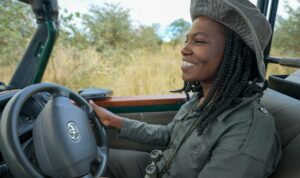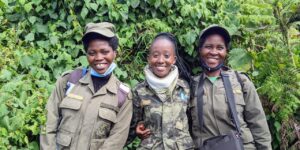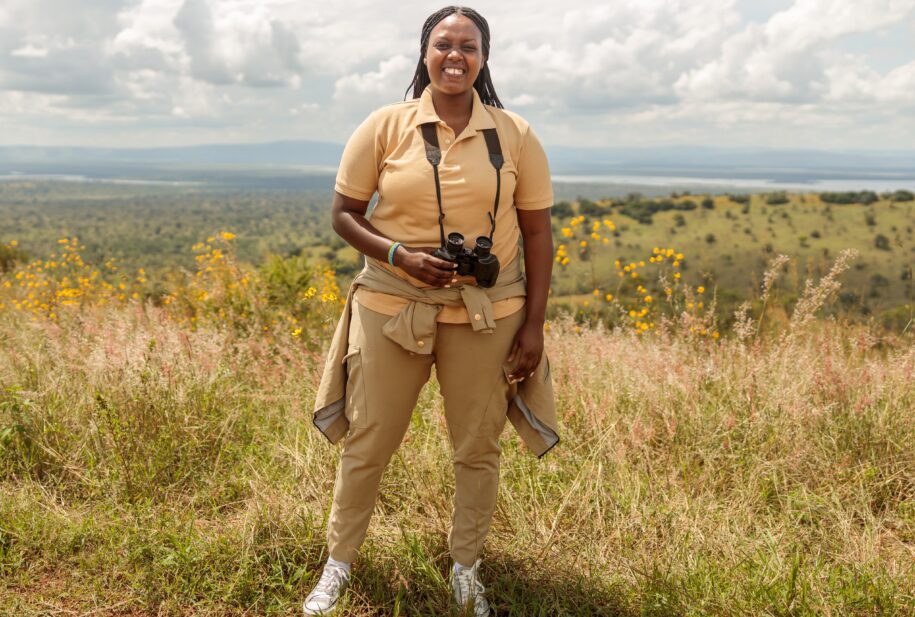Rwanda has built a reputation for smart, sustainability-driven tourism. But there’s more happening beyond the permits and primate tracking routes. Women in tourism are shaping conservation in ways that go beyond photo ops and lodge brochures.
After the genocide in 1994, Rwanda restructured its national identity. That included a deep rethink of gender roles and environmental priorities. Today, both are central to the country’s development model.
Conservation intersects with community development, climate resilience, and local economies. Women, often leading at the community level, are no longer sidelined in these processes.
From guiding eco-conscious experiences to restoring critical habitats, women in tourism are essential to the systems that keep conservation relevant and real. Their work connects tourism with agriculture, policy, and education.
So why does this matter now? Because Rwanda’s model shows that when you center women in tourism and conservation efforts, you don’t just protect land—you change lives. That’s not just good ethics. It’s smart strategy.
Historical and Social Context
To understand the rise of women in Rwanda’s conservation space, you need to start with what happened after 1994.
The genocide left the country shattered. But it also forced a reset.
Women made up over 70% of the population post-genocide because a vast majority of men were victims of the political unrest and violence.
Women had to rebuild homes, lead communities, and fill roles traditionally reserved for men. That necessity became policy.
Rwanda’s government didn’t stop at rebuilding.
It passed some of the strongest gender equity laws in Africa. Women now hold over 60% of parliamentary seats. But these changes didn’t stay in the capital.
Across rural districts, women began to gain legal rights to own land and access finance.
These rights created the conditions for women to lead in natural resource management.
Many already knew—passed down through farming, firewood collection, and water sourcing.
Policy just gave them formal ground to stand on.
At the same time, Rwanda reframed conservation. It became a tool for national identity, eco-tourism revenue, and climate action.
Women moved into these spaces quickly—often through cooperatives, park programs, and education initiatives.
This intersection of policy, necessity, and tradition laid the groundwork. What started as survival has turned into leadership.
Current Roles Women in Tourism Play
Community-Based Restoration
In the western districts of Rusizi and Nyamasheke, women’s cooperatives support the restoration of Nyungwe National Park—one of Africa’s oldest montane rainforests.
Through partnerships with Rwanda’s Forestry Authority and NGOs like ARCOS Network, women manage native seed nurseries, replant indigenous species, and promote forest-compatible agriculture.
Further north, in areas surrounding Gishwati-Mukura National Park, women lead erosion control and buffer zone rehabilitation.
Here, the Forest Landscape Restoration project—supported by the Global Environment Facility—has trained local women to implement contour farming and construct hillside terraces that stabilize the land.
Park Operations
In Musanze District, women increasingly take on formal roles in Volcanoes National Park operations.
The Dian Fossey Gorilla Fund has run training programs for female trackers, research assistants, and education officers.
The Rwanda Development Board (RDB) also licenses women as porters and nature interpreters, allowing them to earn direct income from high-value gorilla trekking activities.
Anti-Poaching and Surveillance
Eastern Rwanda’s Akagera National Park, managed through a public-private partnership between RDB and African Parks, employs female rangers within its law enforcement and community liaison units.
These rangers patrol the park’s perimeter, which borders cattle-grazing communities in Kayonza and Nyagatare Districts.
One notable initiative is the Female Ranger Program launched in 2018, which supports gender-inclusive recruitment and training.
These women not only track snares and report illegal fishing, but they also mediate tensions with nearby residents, helping to reduce human- wildlife conflict.
Agroforestry and Land Rehabilitation
In the Huye and Nyanza districts, women participate in agroforestry training under Rwanda’s Green Gicumbi Project.
With support from the Ministry of Environment and UNDP, these women integrate fruit trees like avocado and grevillea into their farming systems.
This improves soil quality while creating alternative income streams from sustainable crops.

Challenges Women in Tourism Face
Even with strong policy support and growing visibility, women in Rwanda’s conservation sector still face deep-rooted challenges.
Time Poverty and Unpaid Labor
Most rural women in tourism balance conservation work with household duties, subsistence farming, and caregiving.
These responsibilities absorb hours each day, leaving little room for training, meetings, or leadership roles.
For example, a woman planting trees in a reforestation zone may also cook for a family of six, walk long distances to collect water, and care for children or elders.
Conservation fits into the gaps, not the schedule.
This constant juggling limits growth. It’s hard to attend certification programs or leadership training when you’re stretched that thin.
Unequal Access to Education and Technical Training
Rwanda has improved gender parity in school enrollment, but gaps widen as the education level rises.
Fewer girls pursue environmental science, tourism management, or conservation biology at the university level.
Many NGO and government jobs require formal qualifications.
Without those, women are often left in lower-paid, labor-intensive roles while men take monitoring, coordination, or research positions.
Additionally, most technical training programs run in central locations.
Rural women often can’t travel or relocate, especially without childcare or transport support.
Cultural Constraints Around Land and Leadership
Legal reforms have expanded women’s land rights, but implementation isn’t always smooth.
In practice, many women still defer to male relatives on land-use decisions—especially in patriarchal households or areas with strong customary law.
Land ownership affects everything in conservation.
It determines who participates in agroforestry, who receives project funding, and who joins cooperatives.
If women can’t claim their full rights, they risk being left out or pushed to the margins.
Leadership carries its own weight. Women who step into visible roles sometimes face skepticism or quiet resistance.
Community members may question their authority, and some male peers may not offer full support.
Security Risks and Social Pressures
In roles like patrolling forest boundaries or monitoring poaching activity, safety becomes a real concern.
Women in these jobs work long hours, often in isolated areas, and sometimes face harassment or threats.
Even when safety isn’t a direct issue, the social toll can be high.
Working outside the home—especially in physically demanding or visible roles—can lead to judgment or pressure to return to more “traditional” work.
This social friction discourages participation.
Some women quietly drop out of programs, not because they can’t do the work, but because the cost to their reputation or household stability feels too high.
Environmental Stress
Climate change makes all these challenges worse.
When drought reduces crop yields or forest loss limits access to clean water and firewood, it’s women who feel the pressure first.
They walk further, spend more time sourcing materials, and face harder decisions about how to split time between income-generating activities and family needs.
In conservation terms, this reduces capacity.
You can’t focus on forest recovery or park management when your basic needs are under daily threat.

Impact and Opportunities for Women in Tourism
Women-led conservation delivers more than good press. It creates measurable change—social, ecological, and economic.
In areas where women manage agroforestry projects, food insecurity has dropped, tree cover has improved, and incomes have grown.
Community tourism projects run by women have created alternative income streams tied directly to conservation goals.
Handicrafts, guided experiences, and local hospitality are survival strategies that protect ecosystems.
Park programs involving women report stronger community cooperation.
People listen when information comes from someone they know and trust.
That trust lowers conflict, reduces illegal activity, and strengthens local governance.
At the same time, young women are entering conservation science programs in growing numbers.
The opportunity now lies in scale. Rwanda has models that work.
What’s needed is deeper investment, cross-sector collaboration, and long-term support.
Conclusion: The Path Forward
Rwanda’s approach sets a clear example for integrating gender perspectives into environmental management.
This method reflects a commitment to accountability and progressive policy-making.
It encourages further research and dialogue among experts, policy makers, and practitioners from tourism fuelled neighbouring countries like Uganda, Congo, Kenya and Tanzania.
The framework challenges traditional methods and offers a practical model for inclusive development. By continuing to support these initiatives, stakeholders can foster improved governance and build resilient communities.


Leave a Reply
You must be logged in to post a comment.